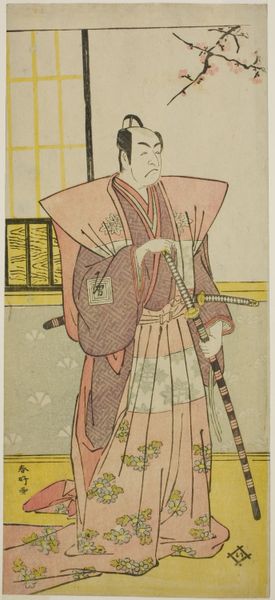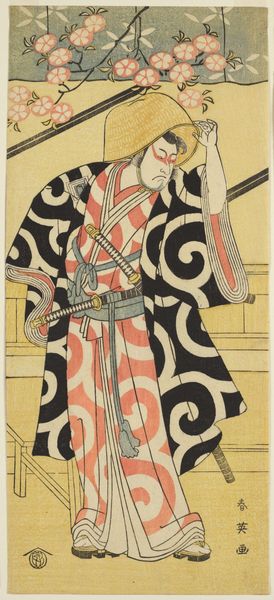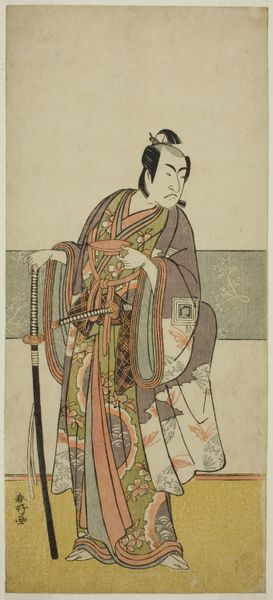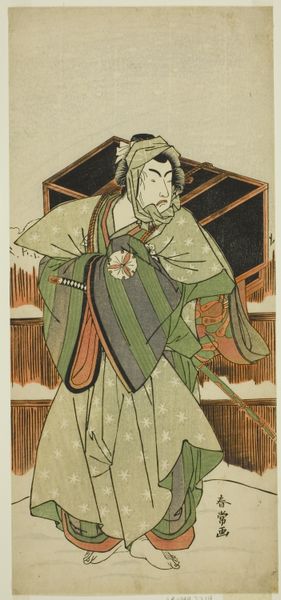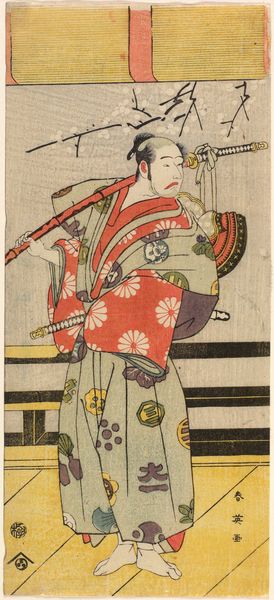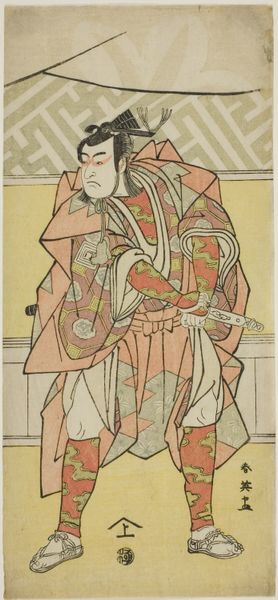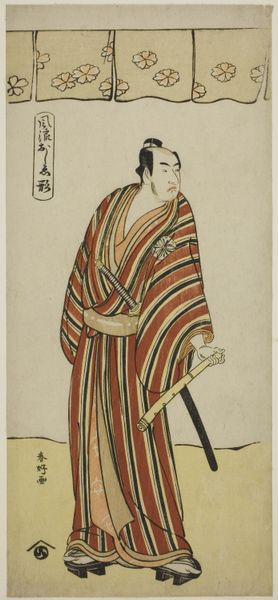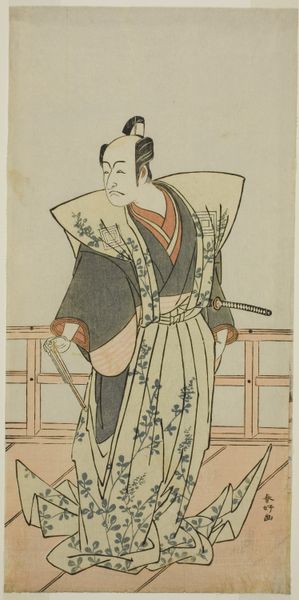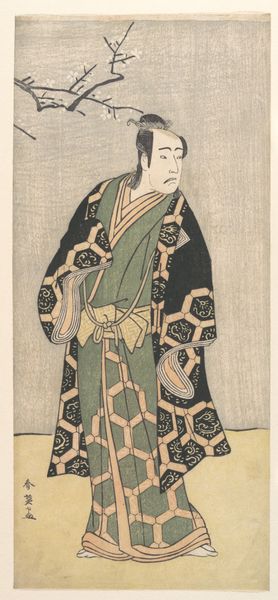
The Actor Ichikawa Komazo III as Fuji Sakon (?) in the Play Egara Tenjin Risho Kagami (?), Performed at the Nakamura Theater (?) in the Third Month, 1789 (?) c. 1789
0:00
0:00
print, woodblock-print
#
portrait
# print
#
asian-art
#
ukiyo-e
#
coloured pencil
#
woodblock-print
Dimensions: 30.8 × 14 cm (12 1/8 × 5 1/2 in.)
Copyright: Public Domain
Editor: This woodblock print from around 1789 by Katsukawa Shunsen depicts the actor Ichikawa Komazo III. The intricate patterns on his kimono really catch my eye, and his swords look particularly detailed. What can you tell me about the creation and meaning behind this work? Curator: From a materialist perspective, we should consider the labor involved in this ukiyo-e print. The paper itself, likely made from mulberry bark, demanded specialized production. The pigments too – where did they originate? The blues, for example, could be imported, making the artist reliant on larger trade networks. And how does that context influence our perception of the character being depicted? Editor: That's a really interesting point. It's easy to forget about the global influences that go into making even seemingly 'local' art. Were these prints widely available or were they mainly for the wealthy? Curator: Ukiyo-e prints like this one, while not cheap, were relatively accessible compared to paintings. The woodblock printing process allowed for mass production, reaching a broader audience. These images circulated within a consumer culture, reflecting and shaping popular tastes. Consider the role of the publisher as well. They financed and distributed these images – essentially mediating the relationship between artist, subject, and the buying public. How does the knowledge of the consumer culture shift your opinion of the print's aesthetic quality? Editor: Thinking about the means of production really changes my perspective. It is not just an image of an actor; it's a commodity that reflects social status, trade, and technology. I initially thought about it only from the point of view of Japanese artistic tradition, without giving any thought to who was involved in creating the print. Curator: Precisely! Examining the materiality of art allows us to appreciate the social and economic networks that brought it into being. We get a richer understanding of art in its time, but also in our own time.
Comments
No comments
Be the first to comment and join the conversation on the ultimate creative platform.
